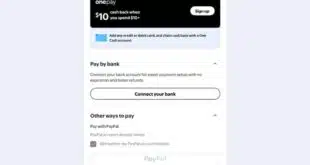Long unneeded in a credit card transaction, the signature at the point of sale still exists. Why?
More than six years ago, the requirement that credit card transactions made at the point of sale be completed with a signature was lifted by the four U.S. card brands. But today, many consumers are still presented with a receipt or a screen to sign for a credit card transaction, especially if a tip is expected.
In 2018, Mastercard Inc. was the first to eliminate its signature rule for transactions made with its U.S. and Canadian credit and debit cards, having announced the change in 2017. American Express Co., Discover Financial Services, and Visa Inc. soon followed.
Also in 2018, Mastercard said issuers globally no longer would be required to include a signature panel on the back of Mastercard products. Famously, the Apple Card, released in 2019, eschews a signature panel, along with card-verification codes and expiration dates, on the physical card.
When the United States embarked on its EMV chip migration more than 10 years ago, the birthplace of the credit card opted to use chip-and-signature instead of adopting chip-and-PIN. At the time, even most debit card transactions used signature verification. Rather than potentially confuse consumers, the U.S. credit card industry stuck with signatures, though with chip technology signatures were more a formality.
“The signature requirement for credit card transactions dates back to the beginning of credit cards,” says Brian Riley, co-head of payments and director of credit and risk advisory at Javelin Strategy & Research, a unit of Livonia, Mich.-based Escalent.
“Back around 2017-2018,” he continues, “the requirement tended to be outdated, as fraud-management systems developed, the CVV code matured, online purchasing surged with card-not-present transactions, and the U.S. market caught up with the rest of the world on EMV chips as an authentication tool.”
‘A Suitable Move’
The U.S. EMV conversion was no easy transition. Issuers had to adopt more costly cards. Merchants needed new point-of-sale terminals for chip cards and had to overhaul training for their employees. Consumers had to adapt to dipping a credit card into a point-of-sale device instead of sliding it through a magnetic-stripe reader.
Simultaneously converting to chip technology and asking consumers to commit another PIN to memory was too much. The financial industry itself seemed hesitant over two conversions at once, determining consumers might not deal well with a two-scale adjustment, says Ted Rossman, senior industry analyst at Bankrate, a consumer financial-services site.
Signatures today typically are not part of low-value or high-traffic transactions, such as those at transit stations, in fast-food restaurants, or while driving on a tollway. But there are instances where some entity—usually a merchant eager to offer an opportunity to add a gratuity or concerned about potential chargebacks—retains the signature step.
“There are still some good reasons to have a signature requirement,” Riley says. “While you might not need a receipt for a $15 meal at a McDonald’s, the signature line makes sense when you have to add a tip to a $150 restaurant check.”
“Similarly,” he continues, “some stores want that signature to acknowledge the transaction, such as when the card may be used to purchase a $3,000 refrigerator. But for low-risk transactions, such as a dry cleaner, where fraud is low, and the transaction is less than $50, there is little practical use for the signature.”
Others see vanishing value in signatures generally at the point of sale.
“There is little benefit to the use of signatures in today’s world,” says Ian Holmes, director and global lead for enterprise fraud solutions at SAS Institute Inc., a Cary, N.C.-based analytics-software developer.
“Although signatures may offer some benefit in a dispute process, the administrative cost is only overcome in large-value disputes,” he adds. “Excluding the need for signatures for any transaction under $100 is likely a suitable industry move.”
Big Holdouts
To Holmes’s point, think about the growth in contactless payments during and since the Covid 19 pandemic. Most of these are low-value transactions and do not require signatures.
It’s for large transactions where merchants may consider a signature valuable, especially if there is a transaction dispute.
At eCFO Solutions LLC, a Fort Lauderdale, Fla.-based accounting-services firm, one client—a plumbing contractor—always collects signatures on receipts, says Ben Rogatinsky, eCFO’s founder and chief executive. The client’s typical ticket could range from $10,000 to $20,000, he says.
In one instance, a customer disputed a transaction. Even with a signed authorization, the credit card issuer backed the cardholder, Rogatinsky says. “The burden of proof is entirely on the vendor that they did what they were supposed to do,” he says. “The reality is, signature means nothing.”
Chargebacks are a big merchant concern, says Bankrate’s Rossman. That’s especially so with online transactions. “That’s grown a lot in the e-commerce era,” Rossman says. Some of that activity could be so-called friendly fraud, where legitimate customers turn to the dispute process because they may not be aware of other options to remedy their dissatisfaction.
For example, some consumers perform an act called “showrooming”—they order multiple versions or sizes of shoes or clothing to try at home, only to return the disfavored ones. In these instances, if the consumer is unsure of how to return them, she may turn to a chargeback, Rossman says.
“Sometimes it feels [as if] the dispute-resolution process is slanted a bit toward the consumer,” he says. “So, merchants want signatures. But that doesn’t really help online at all.”
Restaurants and similar service categories are a big holdout for signatures on the POS receipt.
“I agree that, for the U.S. service industries, the preference of a paper receipt for signature often facilitates the easy provision of gratuities [from] the consumer,” Holmes says. “That said, adding tips through POS terminals directly has become increasingly common. Many chain restaurants also have apps that offer digital payment, where gratuities can be readily added.”
‘Muscle Memory’
Indeed, the tipping culture has grown in recent years. Anecdotal posts on Reddit, an online social network, include tipping requests at a do-it-yourself dog wash, in retail stores, and at a package-shipping store.
“When you think about the push for increased tipping, at locations we never would have tipped for 10 years ago, there is a good business case for the signature to be required on a tipping-eligible transaction,” Riley says.
“Things may evolve to where the merchant might not require the signature,” he continues, “but for my personal preference, I like to see the transaction on paper or a screen if it is for any amount other than the contractual purchase.”
Granted, for many consumers signing a receipt, even if the signature is gibberish—as Riley notes, sales clerks were not qualified to be handwriting experts—is little impediment to making a purchase. One day, though, signatures may be even less of a thought.
The days of carrying a physical card could be numbered, suggests Holmes. As mobile-device use becomes more common, issuers will want instant provisioning to them—something Apple Card, for example, already does—and the expectation may be that the smart phone or wearable is the payment device.
Inertia in payments is a quantifiable factor. The U.S. payment card industry debuted contactless credit and debit cards in the mid-2000s, but consumers didn’t really begin to make contactless payments, and many merchants did not have the equipment to accept them, until the recent pandemic, when everyone wanted a transaction with minimal touch.
“People have muscle memory in payments,” Riley says. “They whip out a card, transact and settle, and move on a terminal, with a wave, or in any variation of acceptance. In 10 years, the merchant operating policy might not require anything at all. Or think about Amazon’s palm technology. I used it recently in Whole Foods, and it took the card-not-present transaction to a new level.”
“That’s one of the fun things about payments,” Riley says. “Behavior develops, technology makes things possible, and both sides of the transaction benefit for the payments ecosystem.”





